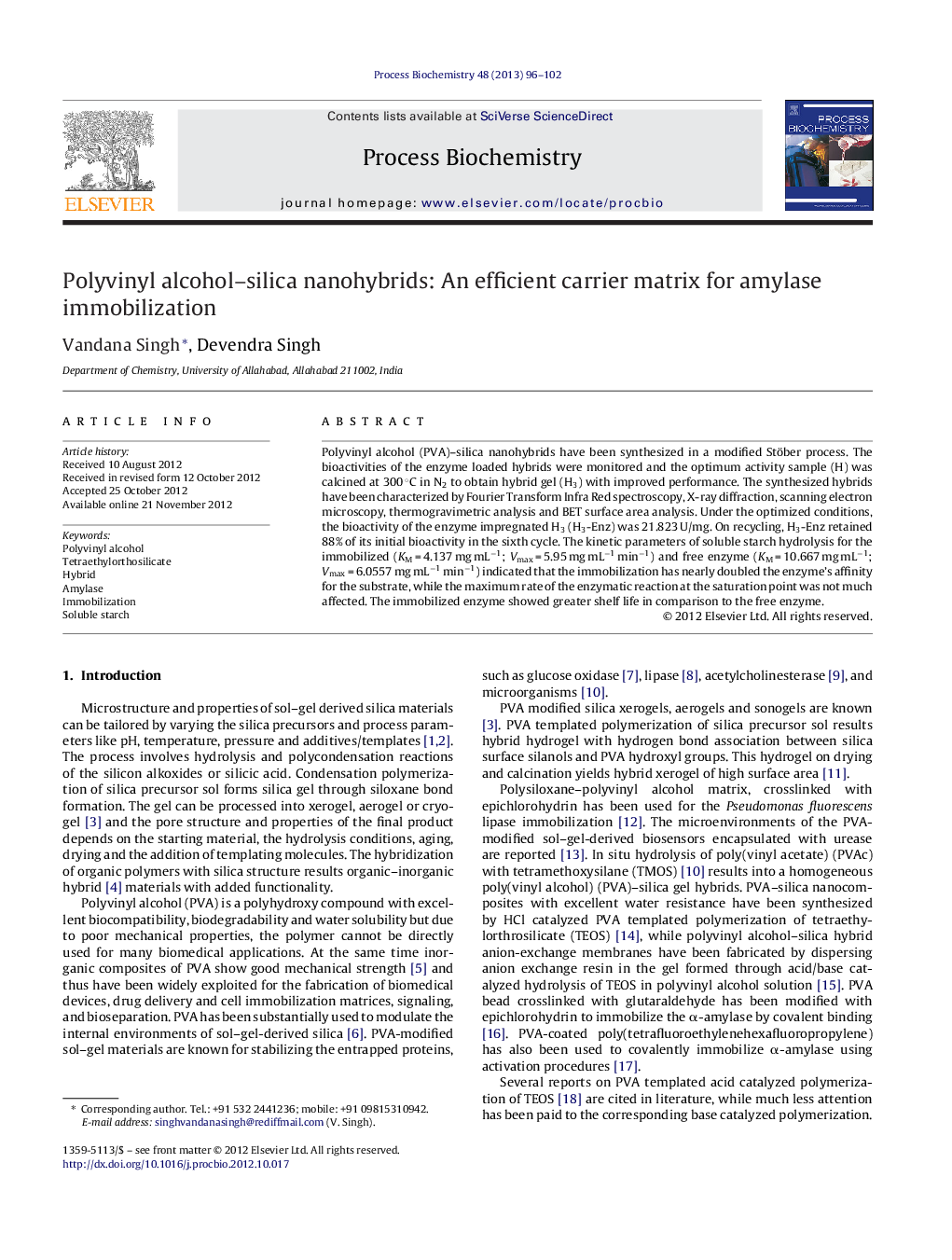| کد مقاله | کد نشریه | سال انتشار | مقاله انگلیسی | نسخه تمام متن |
|---|---|---|---|---|
| 34852 | 45052 | 2013 | 7 صفحه PDF | دانلود رایگان |

Polyvinyl alcohol (PVA)–silica nanohybrids have been synthesized in a modified Stöber process. The bioactivities of the enzyme loaded hybrids were monitored and the optimum activity sample (H) was calcined at 300 °C in N2 to obtain hybrid gel (H3) with improved performance. The synthesized hybrids have been characterized by Fourier Transform Infra Red spectroscopy, X-ray diffraction, scanning electron microscopy, thermogravimetric analysis and BET surface area analysis. Under the optimized conditions, the bioactivity of the enzyme impregnated H3 (H3-Enz) was 21.823 U/mg. On recycling, H3-Enz retained 88% of its initial bioactivity in the sixth cycle. The kinetic parameters of soluble starch hydrolysis for the immobilized (KM = 4.137 mg mL−1; Vmax = 5.95 mg mL−1 min−1) and free enzyme (KM = 10.667 mg mL−1; Vmax = 6.0557 mg mL−1 min−1) indicated that the immobilization has nearly doubled the enzyme's affinity for the substrate, while the maximum rate of the enzymatic reaction at the saturation point was not much affected. The immobilized enzyme showed greater shelf life in comparison to the free enzyme.
► Polyvinyl alcohol–silica hybrid synthesized in a modified Stöber process.
► The hybrid used for diastase alpha amylase immobilization.
► The immobilization did not alter the optimum pH and temperature of soluble starch hydrolysis.
► The immobilization nearly doubled the affinity of the enzyme toward soluble starch.
► The immobilized enzyme is recyclable and has shown good shelf life.
Journal: Process Biochemistry - Volume 48, Issue 1, January 2013, Pages 96–102